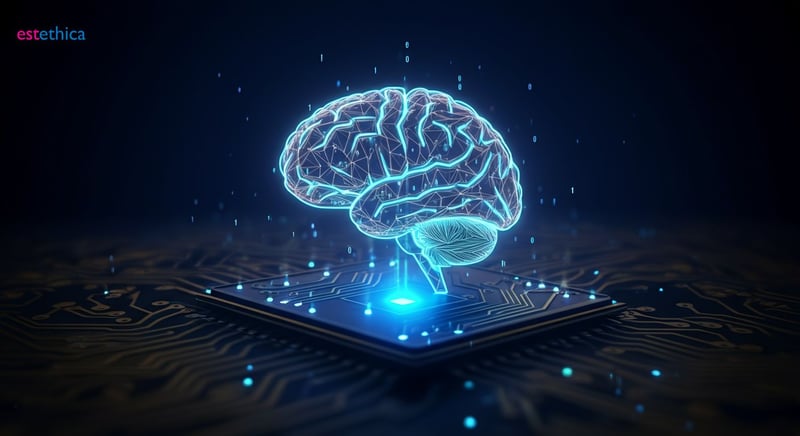AI Unveiled: Mastering Machine Learning & Data Science
Explore the revolutionary world of AI with insights into machine learning and transformative AI solutions.
With the rapid advancement of technology, the realms of artificial intelligence (AI) and machine learning have become increasingly prominent. These cutting-edge fields are driving innovation across industries, from healthcare to finance, and beyond. Understanding the basics of AI, the strategies behind machine learning algorithms, and their application in data science and business solutions is paramount for anyone looking to stay ahead in today’s fast-paced digital world.
Artificial Intelligence Demystified: A Beginner's Guide
Understanding the Core of Artificial Intelligence
Artificial Intelligence (AI) has evolved from a futuristic concept into a tangible reality, permeating various aspects of modern life. At its core, AI seeks to replicate human cognitive functions in machines, enabling them to learn, reason, and adapt. AI systems are designed to analyze vast datasets, identify patterns, and make autonomous decisions with minimal human intervention. This transformative technology is revolutionizing industries by automating complex tasks, enhancing efficiency, and providing valuable insights for better decision-making. For beginners, grasping the fundamental principles of AI is essential to understanding its potential and impact on the future.
AI achieves its capabilities through a combination of algorithms and models that mimic human thought processes. These algorithms allow machines to process information, solve problems, and even learn from their mistakes. One critical aspect of AI is its ability to filter through large electronic databases to identify patterns and trends that would be impossible for humans to detect manually. These systems are driven by algorithms that automate tasks, reduce human error, and increase efficiency in processes. Popular AI technologies include natural language processing (NLP), computer vision, and neural networks, each enabling machines to perform with higher accuracy and effectiveness in decision-making scenarios.
Key Components of AI Systems
- Data Analysis: AI systems analyze large datasets to identify patterns and trends, enabling informed decision-making and predictive capabilities.
- Algorithm Development: AI relies on sophisticated algorithms that mimic human thought processes, allowing machines to learn, reason, and adapt to new information.
- Automation: AI automates complex tasks, reducing human error and increasing efficiency in various industries, from manufacturing to customer service.
Essential Steps to Learn Artificial Intelligence
- Master the Fundamentals: Begin with understanding the basic concepts of AI, including machine learning, neural networks, and data science.
- Learn Programming: Acquire proficiency in programming languages like Python, which are widely used in AI development for building and training AI models.
- Explore AI Technologies: Dive into specific AI technologies such as natural language processing (NLP), computer vision, and robotics to gain practical skills and knowledge.

Machine Learning Algorithms: Choosing the Right Path
Navigating the Landscape of Machine Learning Algorithms
Machine learning, a pivotal branch of AI, empowers algorithms to evolve from data, predicting outcomes without explicit programming. Selecting the optimal machine learning algorithm is vital for achieving desired outcomes. Supervised learning trains algorithms on predefined datasets, while unsupervised learning dissects patterns from non-labeled data. Each method offers unique advantages for different tasks.
For those new to machine learning, understanding foundational algorithms like decision trees, support vector machines, and neural networks is key. The selection of an algorithm hinges on the task's nature, dataset quality, and available computational power. Key considerations include data preprocessing needs, model complexity, interpretability, and scalability. These factors determine how effectively machine learning models tackle specific problems, from complex data patterns to straightforward predictive tasks. Like choosing the right tool for a specialized procedure such as a BBL surgery, the right algorithm depends on the desired outcome.
Factors to Consider When Selecting an Algorithm
- Data Quality: The algorithm's performance is significantly affected by the quality and structure of the data; preprocessing may be necessary.
- Model Complexity: Balancing model complexity with available computational resources ensures efficiency and accuracy.
- Interpretability: The ability to understand and explain the model's decisions is crucial for trust and validation.
Steps for Effective Algorithm Selection
- Define the Problem: Clearly outline the task or problem you aim to solve with machine learning.
- Evaluate Data: Assess the available data's volume, type, and quality to determine the best-suited algorithm.
- Test and Refine: Experiment with different algorithms, evaluate their performance, and fine-tune parameters for optimal results.

Data Science Applications: Transforming Insights into Action
Leveraging Data Science for Enhanced Decision-Making
Data science integrates statistics, data analysis, and machine learning to derive actionable insights from both structured and unstructured data. The primary objective is to convert raw data into practical knowledge, empowering organizations to make well-informed decisions that foster progress and efficiency. A data scientist interprets intricate data sets, constructs predictive models, and formulates strategies to address real-world challenges. For instance, in healthcare, predictive analytics can forecast patient readmission rates, enabling hospitals to allocate resources more effectively and improve patient care. Data science is also instrumental in optimizing supply chain management, predicting equipment failures, and enhancing cybersecurity measures.
Data science techniques find applications in marketing analytics, customer behavior prediction, and operational optimization. Tools such as Python and R, along with libraries like TensorFlow and SciPy, are commonly used to process data and develop robust models. For example, retailers use machine learning algorithms to analyze purchasing patterns and recommend products, boosting sales and customer satisfaction. The rise of AI and machine learning continues to transform how organizations utilize data-driven insights to seize business opportunities and bolster competitiveness. These advancements allow businesses to personalize customer experiences, automate complex processes, and gain a competitive edge in dynamic markets. Just as a skilled surgeon uses precision in a BBL surgery, data scientists use algorithms to refine data and achieve precise results. The growing demand for skilled data scientists underscores the importance of mastering these tools and techniques for career advancement.
Key Applications of Data Science
- Predictive Analytics: Uses historical data to forecast future outcomes, helping businesses anticipate trends and make proactive decisions.
- Customer Behavior Analysis: Analyzes customer data to understand preferences and behaviors, enabling personalized marketing and improved customer experiences.
- Operational Optimization: Optimizes business processes by identifying inefficiencies and areas for improvement, leading to increased productivity and cost savings.
Steps to Implement Data Science Successfully
- Define Business Goals: Clearly identify the business objectives that data science will help achieve, ensuring alignment with organizational strategy.
- Collect and Prepare Data: Gather relevant data from various sources and preprocess it to ensure quality, consistency, and accuracy for analysis.
- Develop and Deploy Models: Build predictive models using appropriate algorithms and deploy them to generate insights and inform decision-making processes.

AI Solutions for Business: Driving Innovation and Efficiency
Enhancing Business Operations with AI
The integration of AI solutions in business offers significant benefits, driving both innovation and operational efficiency. AI technologies can analyze large datasets at high speed, delivering insights that human analysis alone could not achieve. These innovations are transforming industries by enhancing customer interaction, automating routine tasks, and streamlining complex processes. For example, AI-driven chatbots are revolutionizing customer support, providing 24/7 assistance and reducing workload on human agents.
AI's capability to enhance decision-making processes, reduce operational costs, and foster innovation, positions it as a critical component of modern business strategy. Organizations are increasingly investing in AI development to maintain competitive advantages. As AI continues to evolve, businesses adopting these technologies are well-positioned to optimize their operations and provide superior products and services efficiently. However, navigating the AI solutions landscape also requires understanding challenges, such as data privacy and ethical considerations, which are vital for sustainable AI implementation strategies. Just as a plastic surgeon tailors a BBL surgery to the patient’s body, AI can personalize business operations to specific needs.
Benefits of Implementing AI Solutions
- Improved Efficiency: Automating routine tasks with AI reduces operational costs and minimizes human error.
- Enhanced Decision-Making: AI's ability to analyze large datasets provides insights that improve strategic planning and operational adjustments.
- Better Customer Experience: AI-powered chatbots and personalized recommendations improve customer satisfaction and loyalty.
Steps for Integrating AI in Business
- Identify Key Areas: Determine which business processes can benefit most from AI automation and insights.
- Invest in Training: Educate staff on how to use and manage AI tools to maximize their effectiveness.
- Address Ethical Concerns: Develop guidelines for data privacy and responsible AI usage to maintain trust and compliance.
AI-Driven Data Analysis for Precise Pattern Identification
AI Solutions Enhancing Customer Experience and Streamlining Complex Processes
Frequently Asked Questions
What are the fundamental differences between artificial intelligence and machine learning?
How does data science leverage machine learning algorithms for practical applications?
What programming languages are essential for AI development, and why?
What are the key benefits of implementing AI solutions in a business environment?
What ethical considerations should be addressed when integrating AI into business processes?
Achieve your aesthetic goals with estethica's personalized treatment plans.
📞 Get Your Free Consultation!